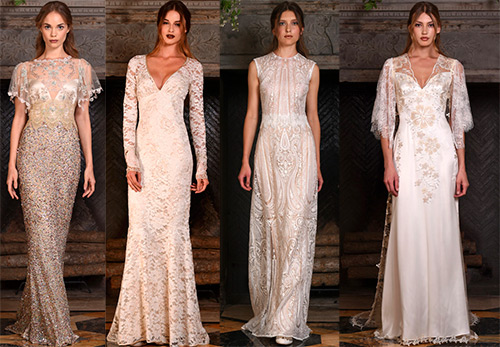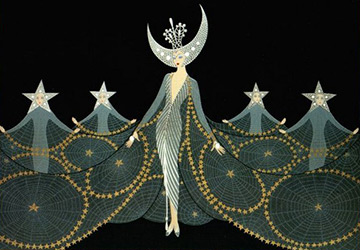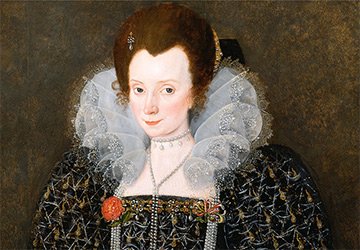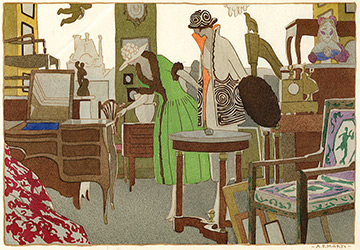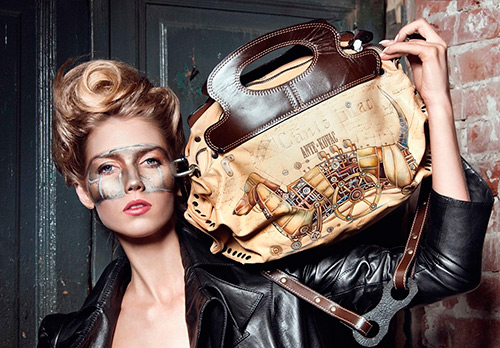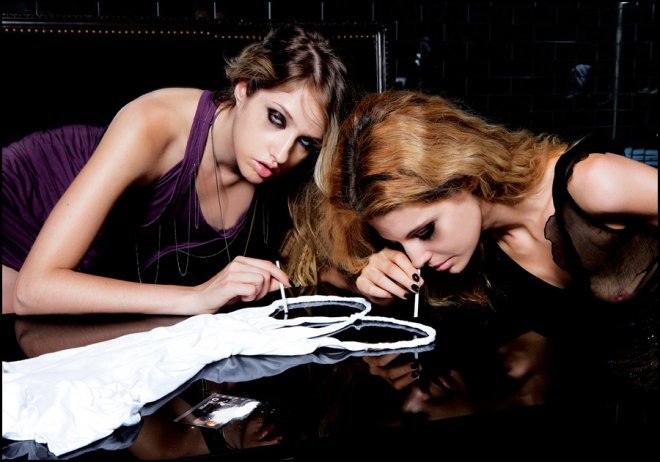Art
Paintings of the artist Alphonse Mucha and the Art Nouveau style
He is called one of the most famous artists modern style and the creator of his own unique style. "Women of the Fly" (images of seasons, times of day, flowers, etc. in female images) are known all over the world for their open sensuality and captivating grace.
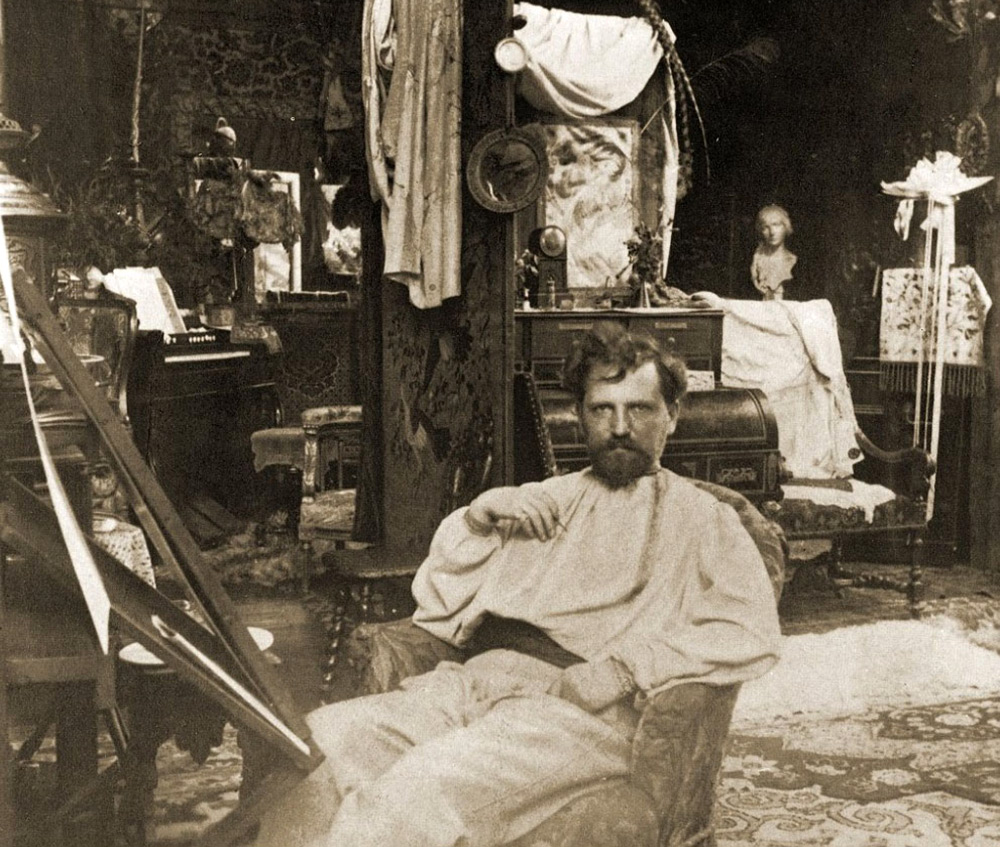
Since childhood, Alphonse Mucha loved to draw, but his attempt to enter the Prague Academy of Arts was unsuccessful. Therefore, he began his career as a decorator, artist of posters and invitation cards. He also did not refuse to paint walls and ceilings in rich houses.
Once Alphonse Mucha worked on decorating the family castle of Count Couen-Belassi, and he was so impressed by the artist's work that he agreed to pay for his studies at the Munich Academy of Fine Arts. There he mastered the technique of lithography, which later became his trademark.
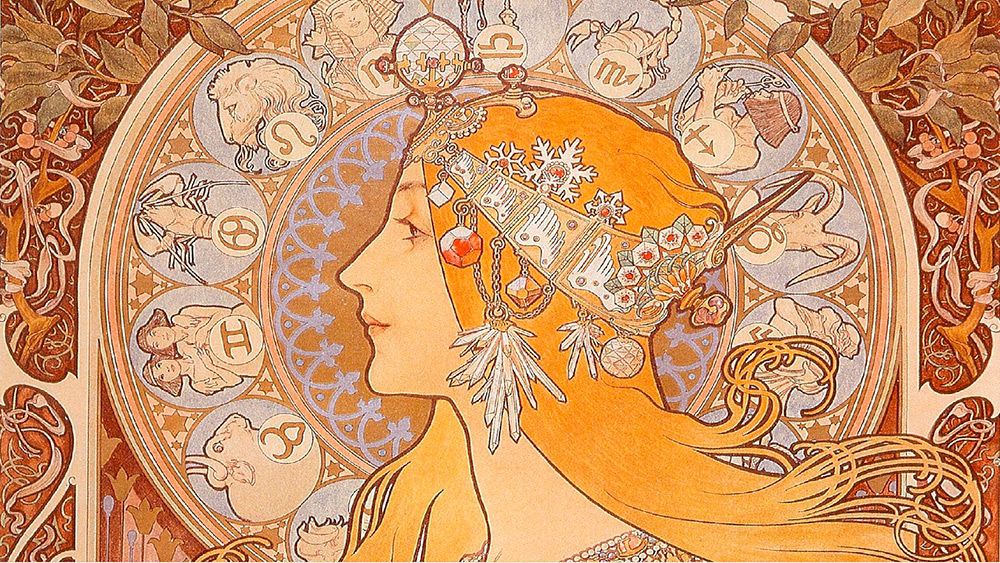
After classes in Munich, he moved to Paris, where he studied at the Académie Colarossi and made a living making advertising posters, posters, restaurant menus, calendars and business cards.
The meeting of the artist with the actress Sarah Bernhardt became fateful. When the actress saw the poster made in the technique of multicolor lithography, she was delighted and wanted to see the author. On her recommendation, Mukha was promoted to chief decorator of the theater and since then has designed posters, costumes and sets for her performances.
In Russia, the name of the famous Czech artist Alphonse Mucha is little known. Meanwhile, it has literally become a symbol of painting of the end of the "golden" - the beginning of the "silver" centuries. His style (in painting, architecture, small decorative forms) was called “the style of the Fly”. Or - "modern", "art nouveau", "secession". The name came from France. And the artist himself is sometimes considered French in Europe. But this is not the case.
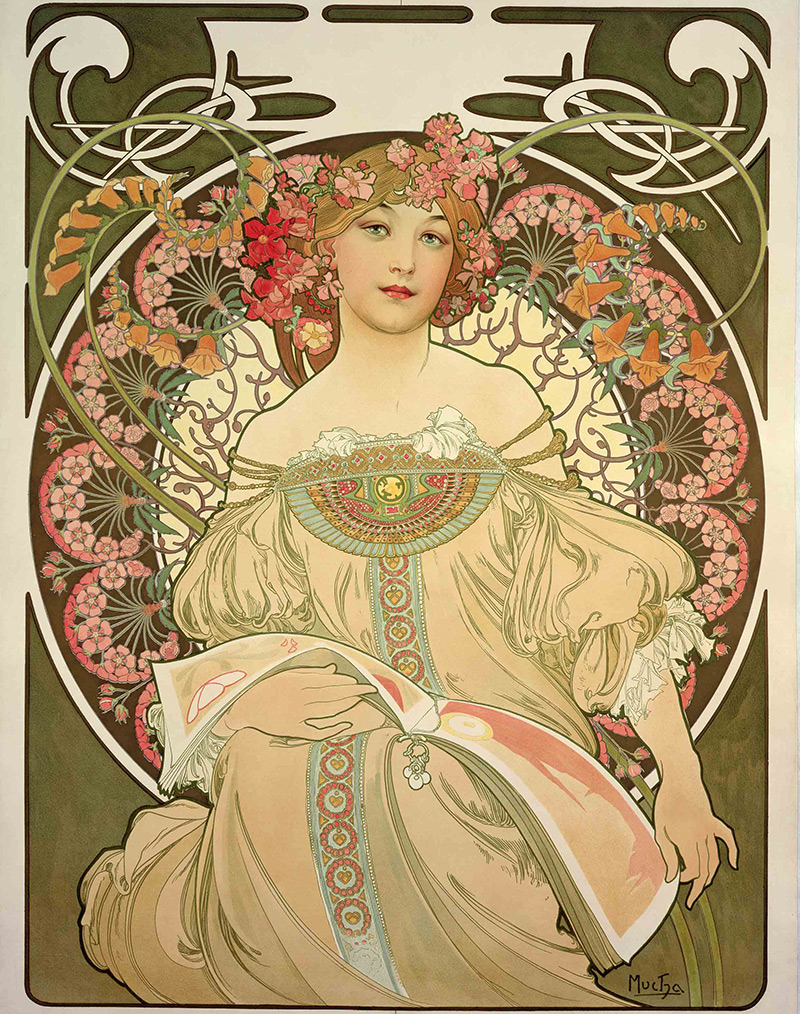
Alphonse Mucha is an outstanding Czech artist, master of theatrical and advertising posters. One of the brightest artists of the Art Nouveau style.
Luxurious and sensual "women of the Fly" were replicated and sold in thousands of copies in posters, postcards, playing cards. The classrooms of secular aesthetes, the halls of the best restaurants, ladies' boudoirs were decorated with silk panels, calendars and prints of the master. In the same style, colorful graphic series "Seasons", "Flowers", "Trees", "Months", "Stars", "Arts", "Gems" were created, which are still replicated in the form of art posters.
Between 1898 and 1899, Alphonse Mucha worked on covers and illustrations for the Parisian magazine Cocorico. On its pages was printed and executed in pencil and gouache cycle "12 months" - images of female figures, sometimes nude, as well as graceful ladies' heads. The women in his lithographs are attractive and, as they would say now, sexy.
At the turn of the century, Alphonse Mucha became a real master, who was closely listened to in the circles of the artistic community. Sometimes even the Art Nouveau style in France was called the Mucha style. Therefore, it seems logical that the artist's book "Decorative Documentation" was published in 1901.
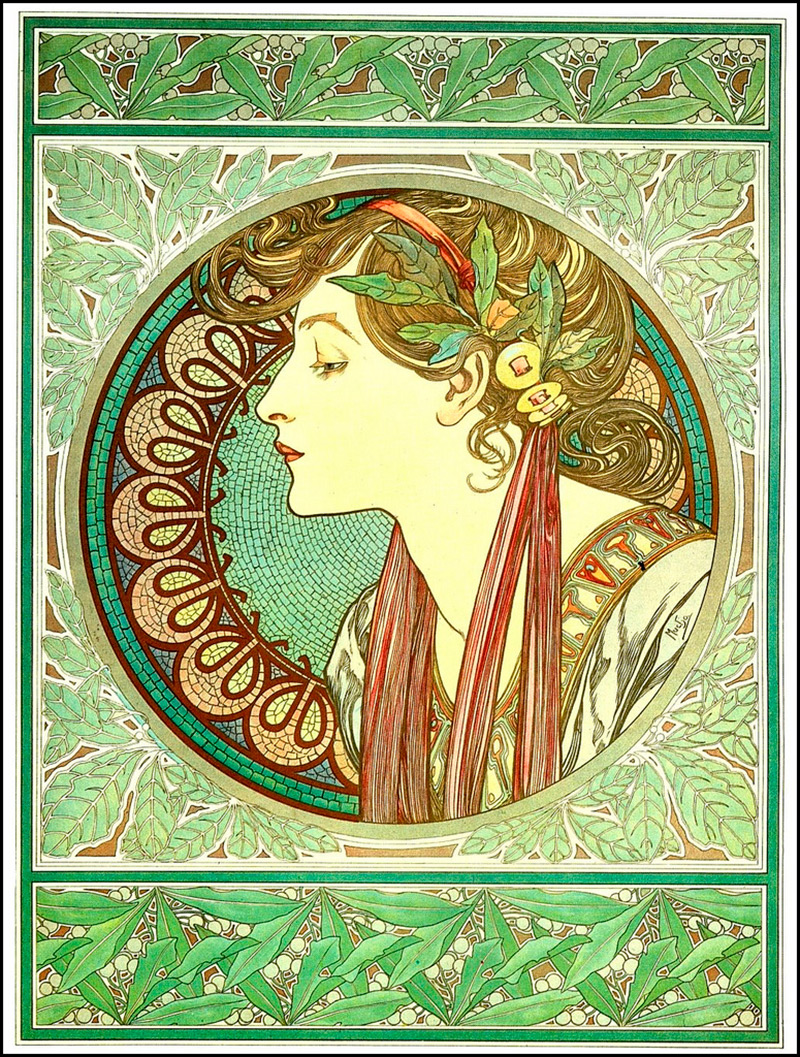
This is a visual guide for artists, on the pages of which a variety of ornamental patterns, fonts, drawings of furniture, various utensils, dining sets, jewelry, watches, combs, brooches are reproduced.
The technique of the originals is lithography, gouache, pencil and charcoal drawing. Many of the artist's works were subsequently executed in metal and wood, for example, gold brooches and a necklace with portraits of Sarah Bernhardt, intended for the actress herself.
In 1906, Alphonse Mucha left for America to earn the money necessary to fulfill the dream of his entire creative life: to create paintings for the glory of his Motherland and all Slavs.
Despite the creative and financial success in the United States, American life weighed down on Mucha with its sole focus on money, he dreamed of returning to the Czech Republic. In 1910 he returned to Prague and focused all his energies on the "Slav Epic". This monumental cycle was donated by him to the Czech people and the city of Prague, but was not successful with art critics.
All of Mucha's works are distinguished by their own unique style. The figure of a beautiful and girlishly graceful woman, loosely but indissolubly inscribed in an ornamental system of flowers and leaves, symbols and arabesques, has become his trademark.
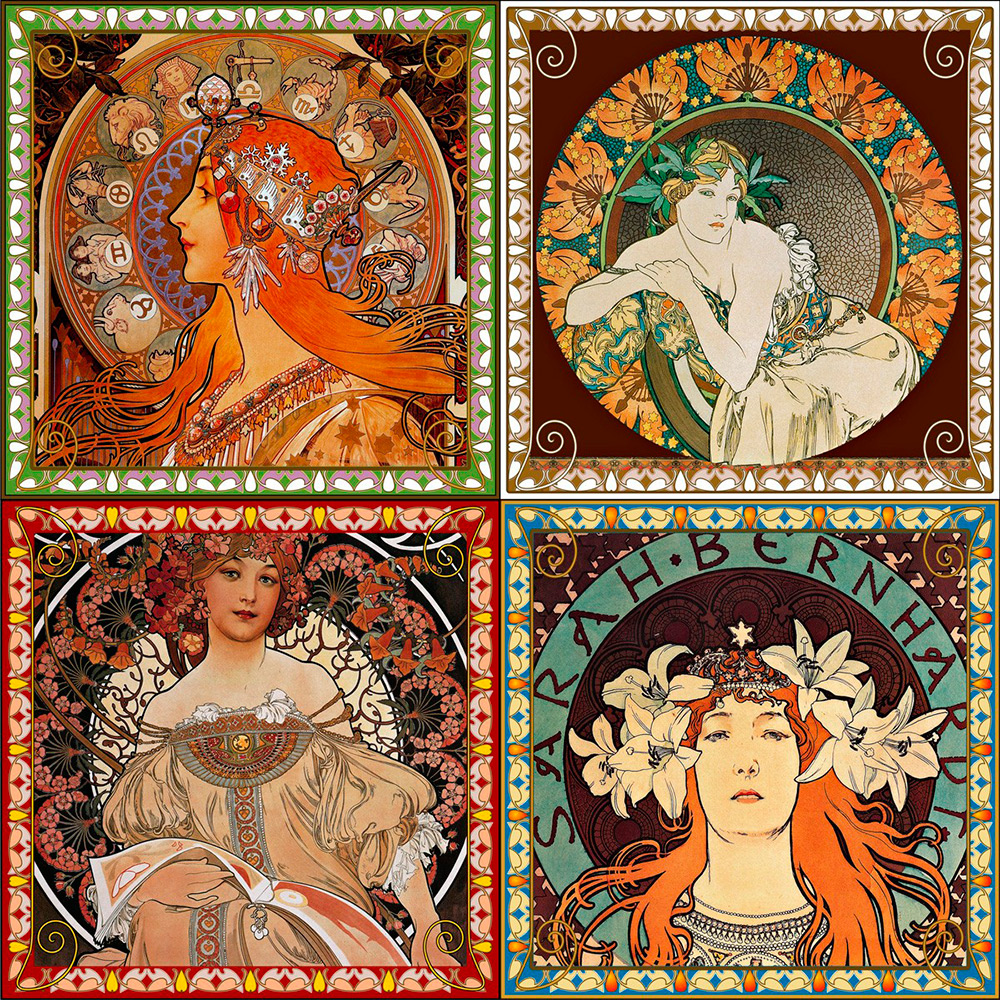
The center of the composition, as a rule, is a young healthy woman of Slavic appearance in loose clothes, with a luxurious crown of hair, drowning in a sea of flowers - sometimes languidly captivating, sometimes mysterious, sometimes graceful, sometimes unapproachablely fatal, but always charming and pretty.
Alphonse Mucha's paintings are framed by intricate floral designs that do not hide their Byzantine or Oriental origin. Unlike the disturbing paintings of contemporary masters - Klimt, Vrubel, Bakst - the works of Alphonse Mucha breathe calmness and bliss. The Art Nouveau style in Mucha's work is the style of women and flowers.
The open sensuality of Mucha's works still fascinates viewers, despite the fact that each era creates its own, new forms of the erotic ideal. All critics note the "singing" lines in the paintings of Mucha and the exquisite color, warm as a woman's body.
A lot of decorations based on Mucha's sketches were made for the bride, and then for the artist's wife, Maria Khitilova, whom the artist and his friends called Marushka. Khitilova was a compatriot of Mucha. They got married in 1903 and lived together all their lives.
Maria was 22 years younger than the artist and outlived him about the same. In her feelings for the artist, there was no material calculation, because at the time of their wedding, the debts of Alphonse Mucha far exceeded his condition.
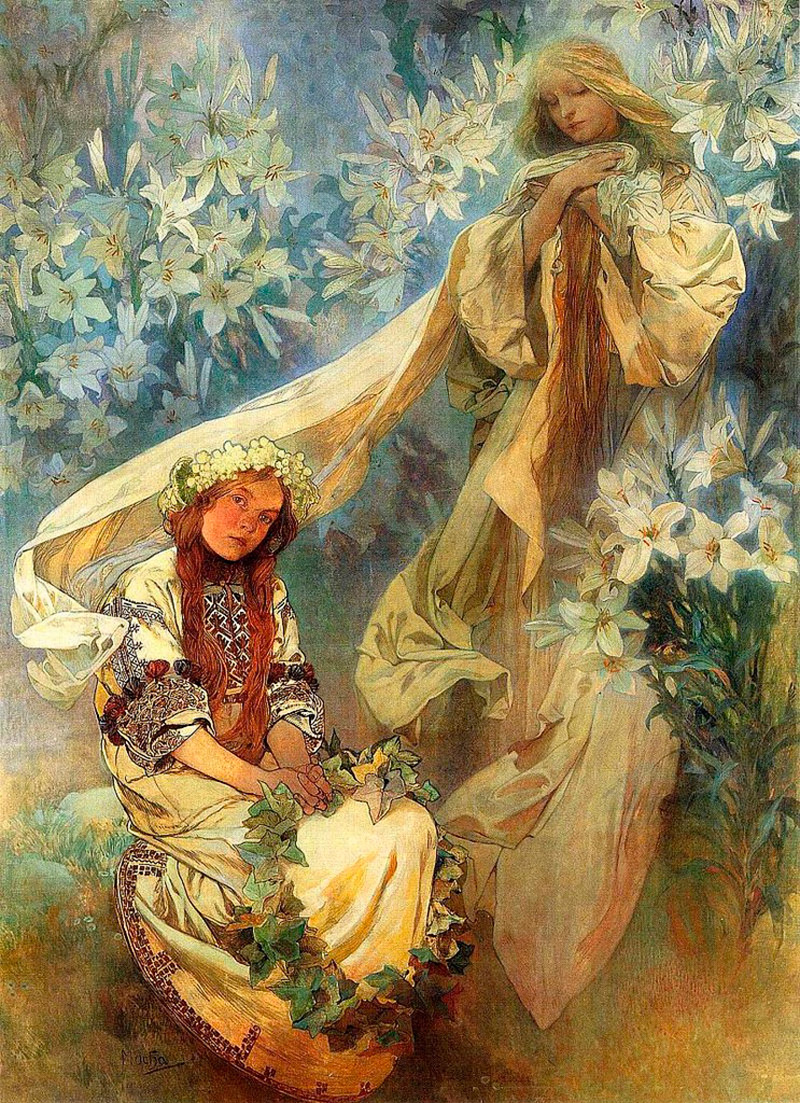
Maria Khitilova became a permanent model for the Fly, and her features are easily guessed in many paintings. In their marriage, two daughters were born, who, when they grew up, also became characters in many of the artist's paintings. The red-haired Slavic beauties in the paintings of Alphonse Mucha are dictated precisely by the images of the artist's wife and his daughters - they all had this type of appearance.
Many of the pictorial elements of his work can be found in the works of contemporary designers, illustrators and advertising masters. Mucha admired the ideal of artistic versatility. He was not only a painter and graphic artist. Mucha knew how to do what few people were able to do: he brought beauty into everyday, everyday life, made him look in a new way at the secondary art of posters, posters and the design of various goods.
The artist created not only real paintings and beautiful images, but also made simple things around us with works of art. Typical of the artistic quest at the turn of the 19th and 20th centuries, Mucha's style has become a model for a whole generation of graphic artists and designers. And today we represent the Art Nouveau style through the works of Alphonse Mucha, while not knowing the name of the artist.
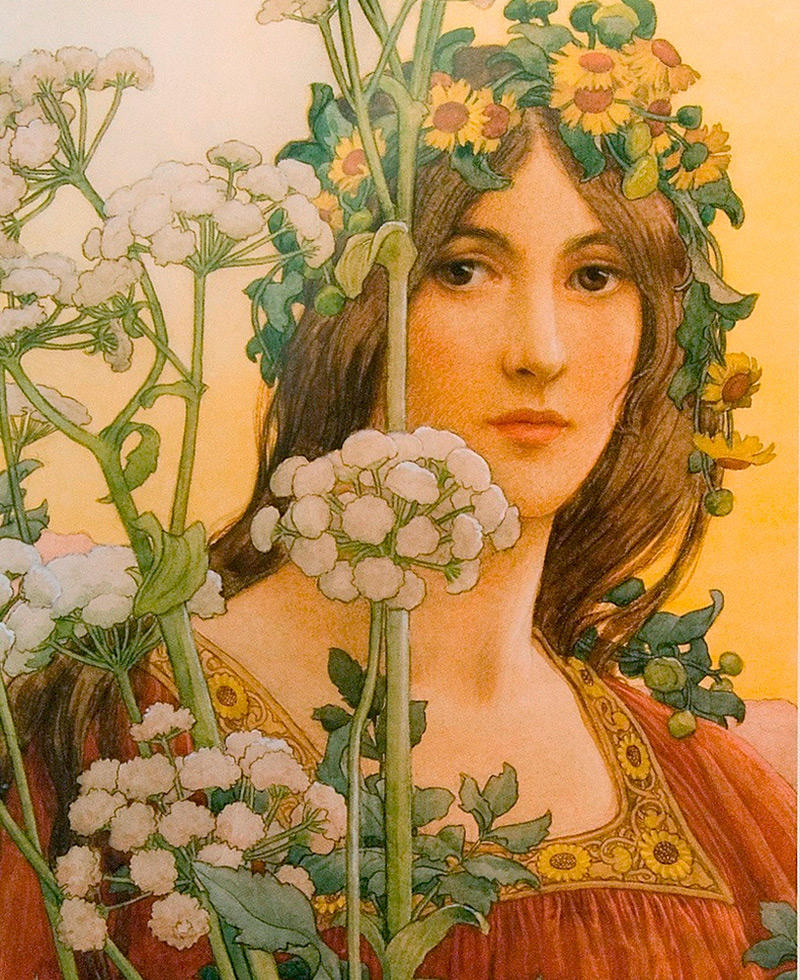
We remember not so much his name as his works, which continue to remain popular with both museum visitors and designers.
Mucha expressed the Art Nouveau style in clear, distinct and expressive forms that are easily remembered even by an inexperienced viewer. The purity of expression of style makes the work of Alphonse Mucha a unique phenomenon in history
The artist died on July 14, 1939 - exactly 4 months after the occupation of the Czech Republic and Moravia by Nazi troops and 10 days before his seventy-nine birthday.
Today in Prague there is a museum dedicated to the artist's work. There you can also find many souvenirs with images of paintings and illustrations by Alphonse Mucha.
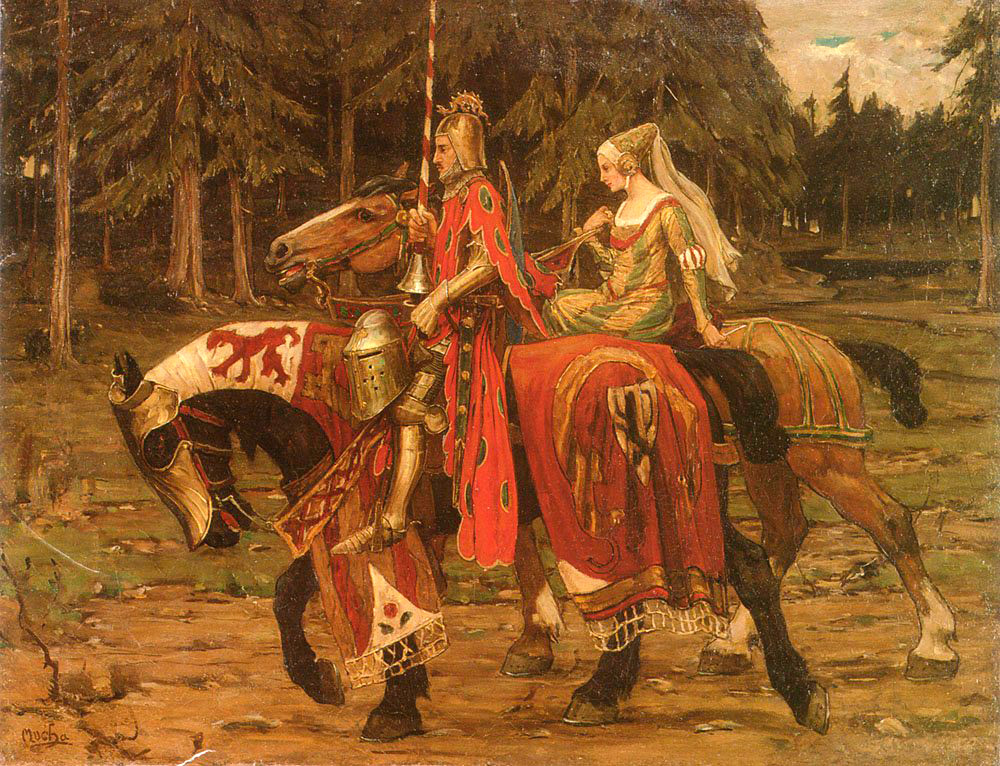
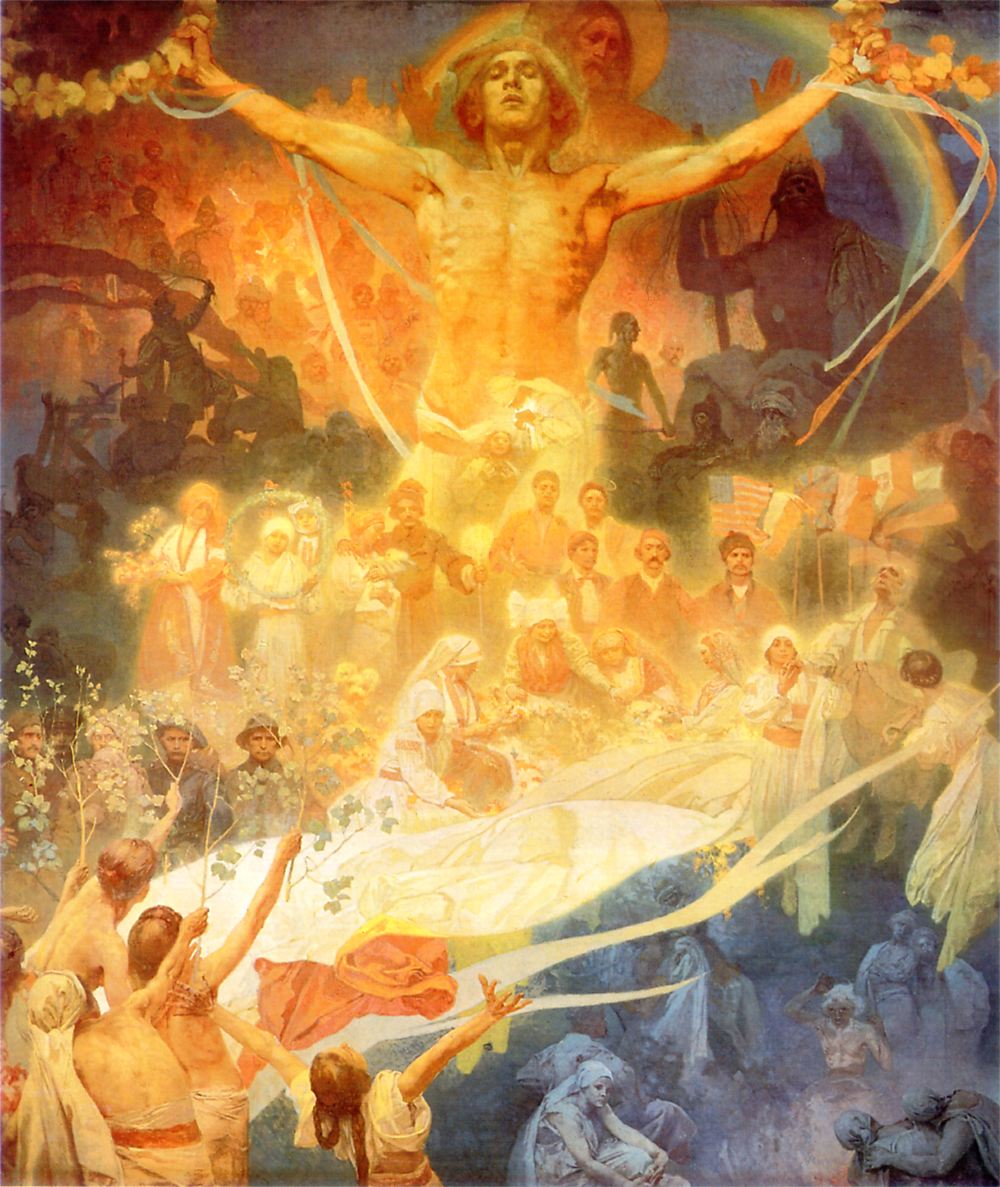
"Slav Epic"
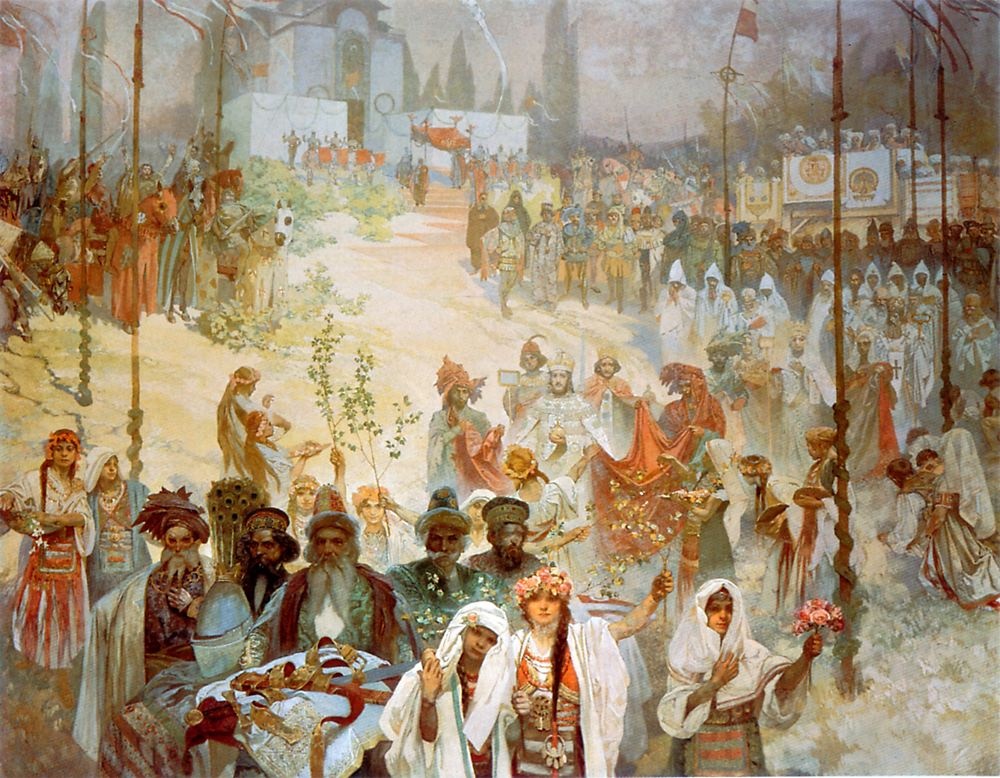
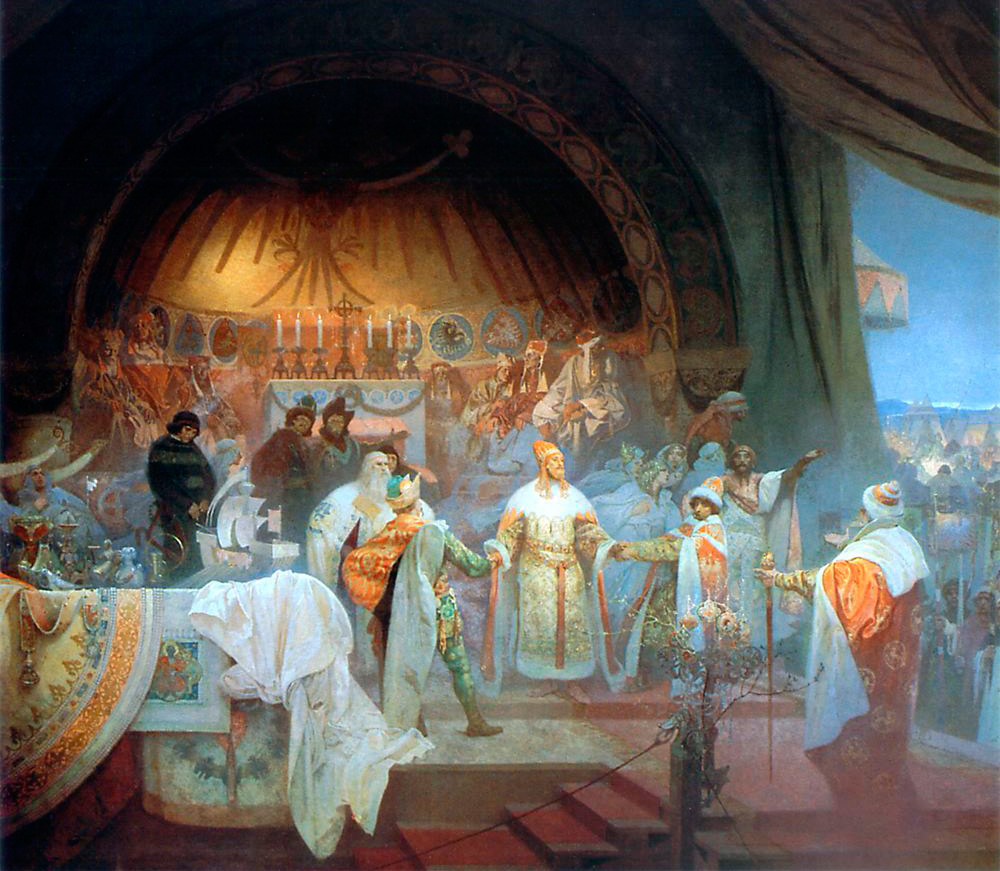
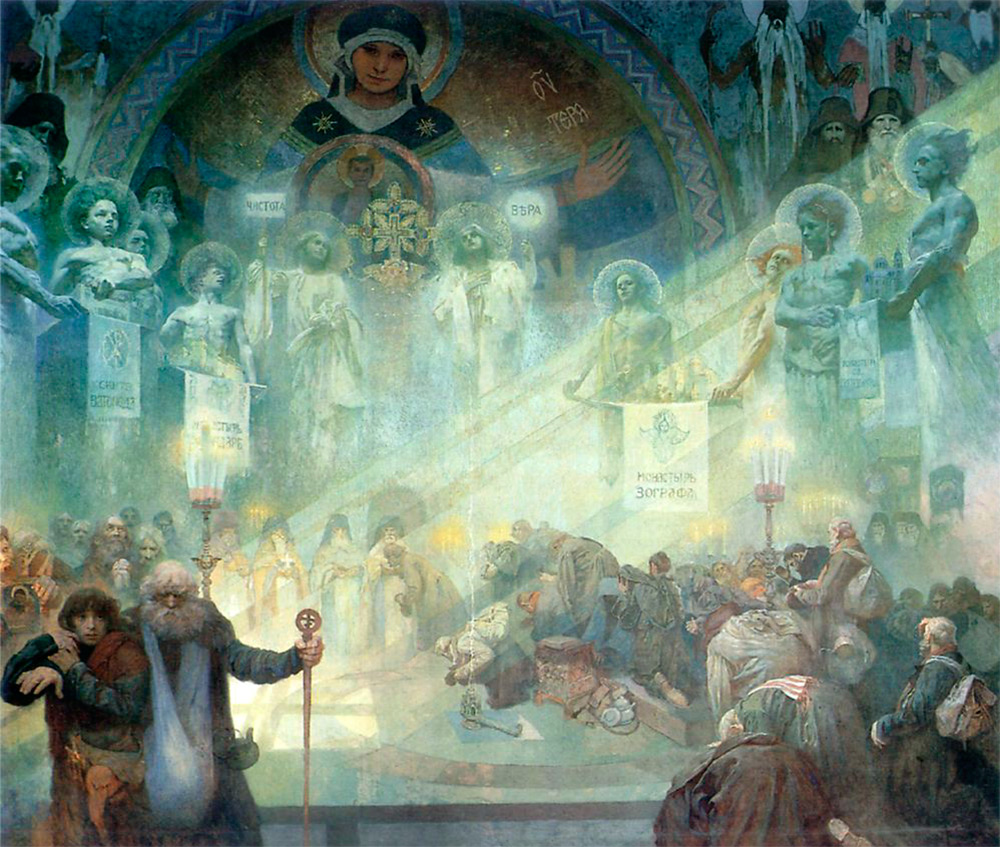
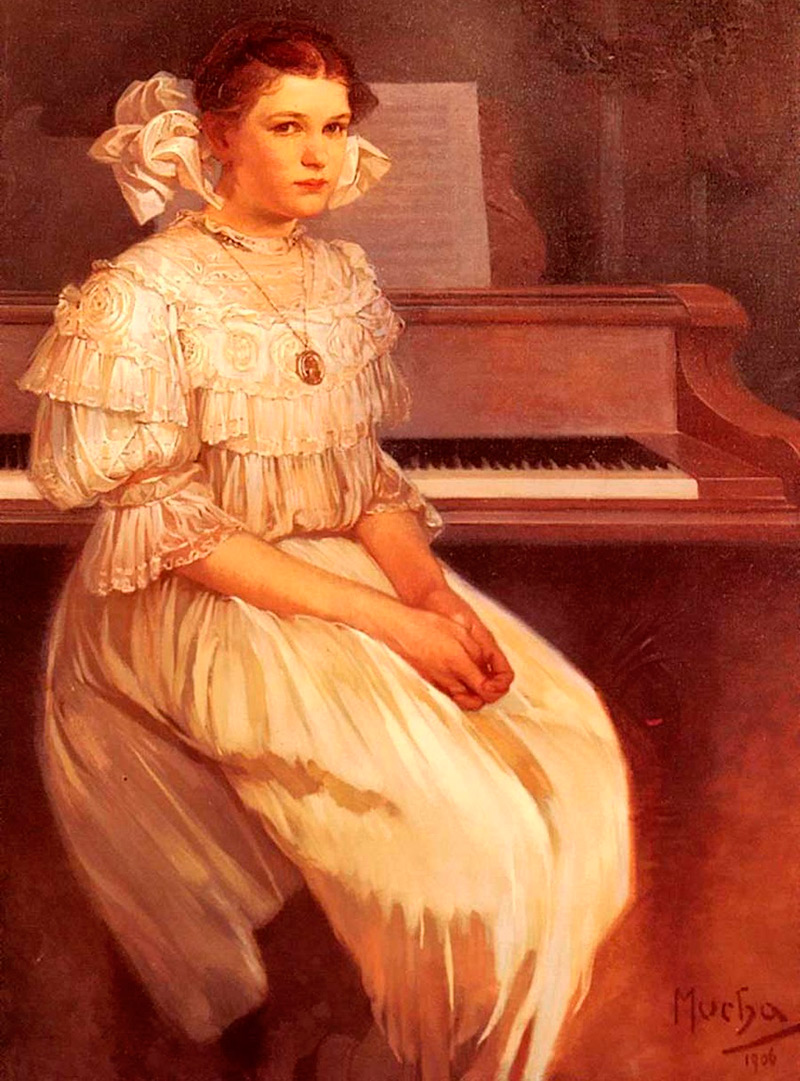
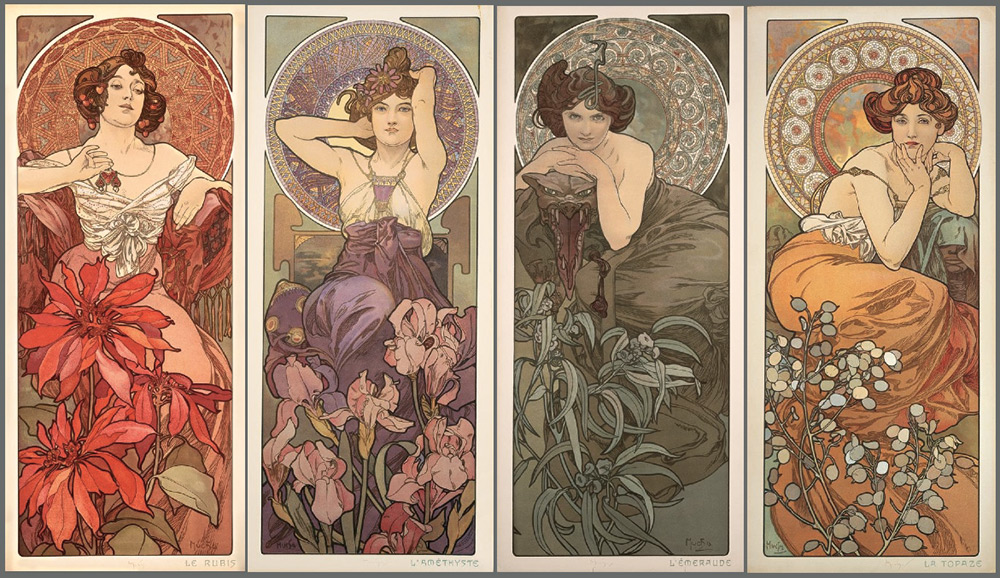
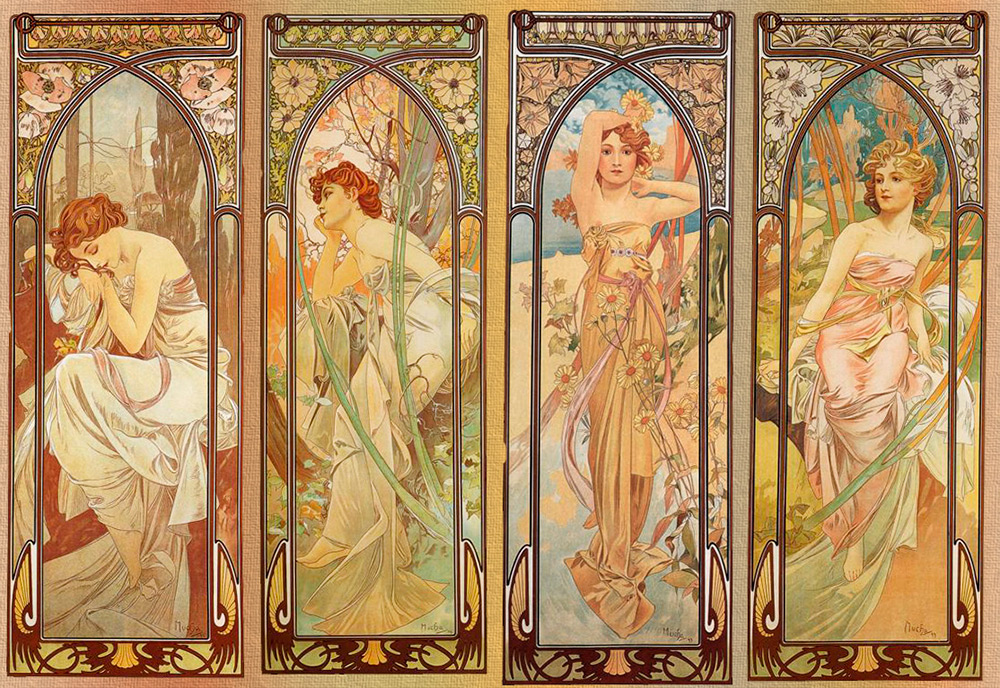
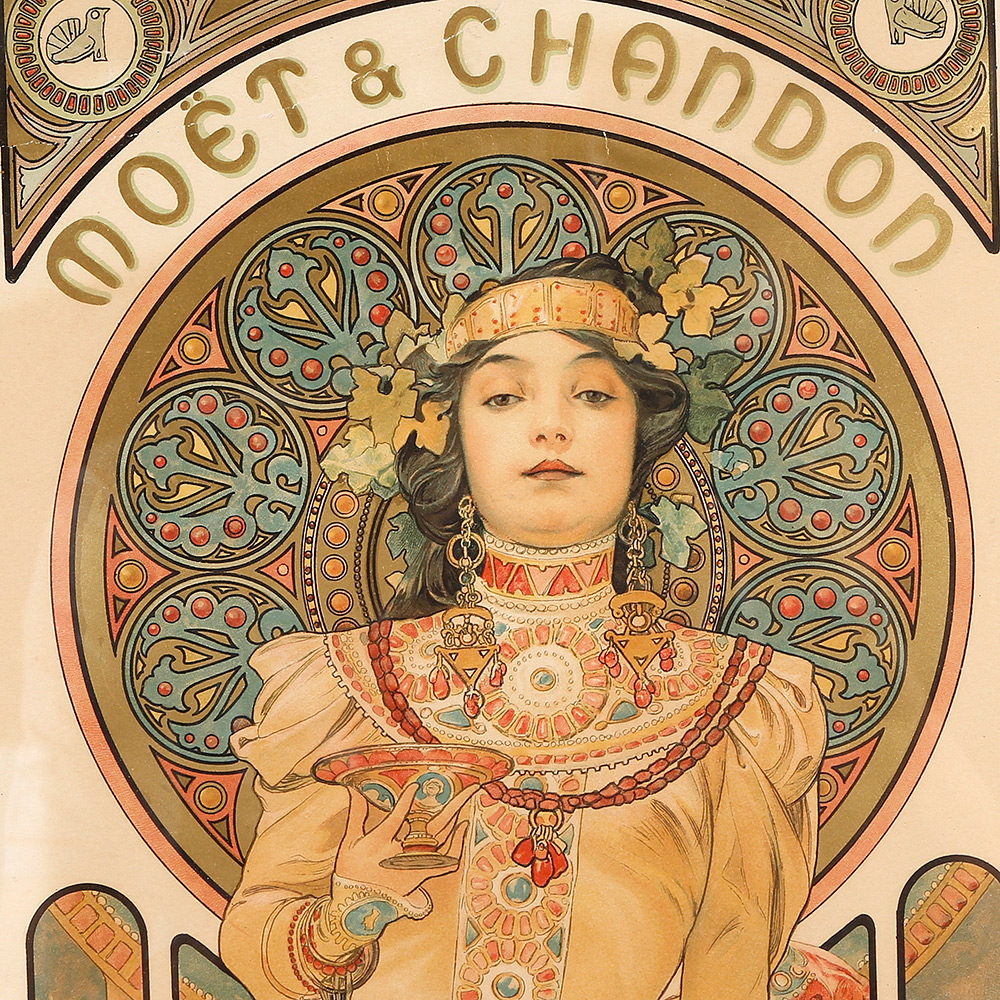
Comments and Reviews
Add a comment
Rating news
Shades of clothing that make women look younger
What shades of hair make women younger: rules and photos
Funny wedding dresses - photos and ideas
12 most expensive down jackets for the winter
How to look 25 at 40: tips from supermodels
Beautiful schoolgirls
Anti-aging haircuts and hairstyles for women
Fashionable skirts for autumn and winter
Fashionable women's trousers for the cold season
Fashionable and stylish sandals for summer 2024
Spring-summer 2024
 Fashionable dresses and tops with thin spaghetti straps
Fashionable dresses and tops with thin spaghetti straps
 Bandana tops: how to wear stylishly and beautifully
Bandana tops: how to wear stylishly and beautifully
 How to put together the perfect men's wardrobe for the summer
How to put together the perfect men's wardrobe for the summer
 Fashionable shorts for spring-summer 2024
Fashionable shorts for spring-summer 2024
 Fashionable skirts for spring-summer 2024: a guide to online shopping
Fashionable skirts for spring-summer 2024: a guide to online shopping
 The most fashionable dresses spring-summer 2024: styles and colors
The most fashionable dresses spring-summer 2024: styles and colors
 Fashionable total look 2024: ideas of images and trends
Fashionable total look 2024: ideas of images and trends
